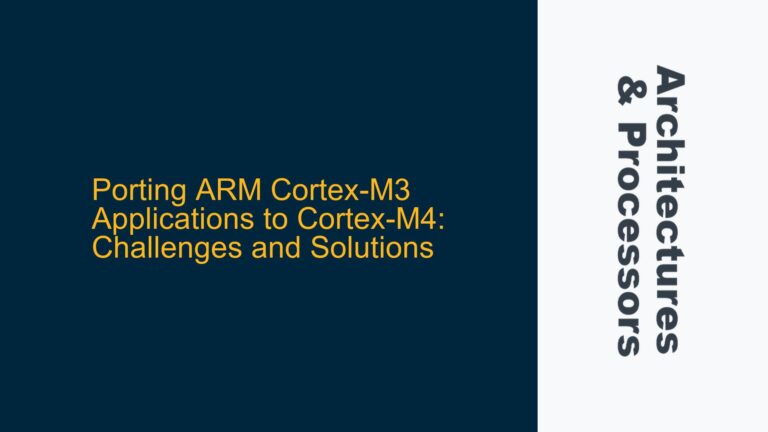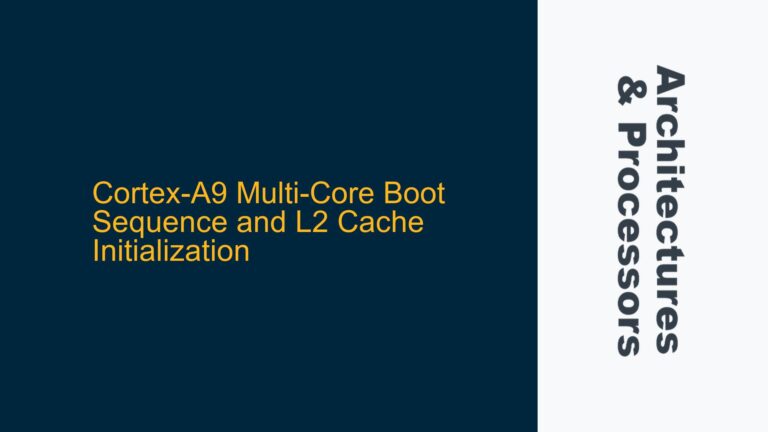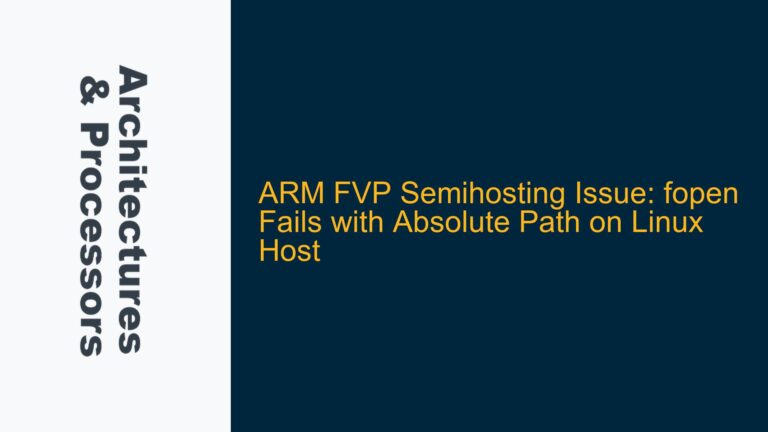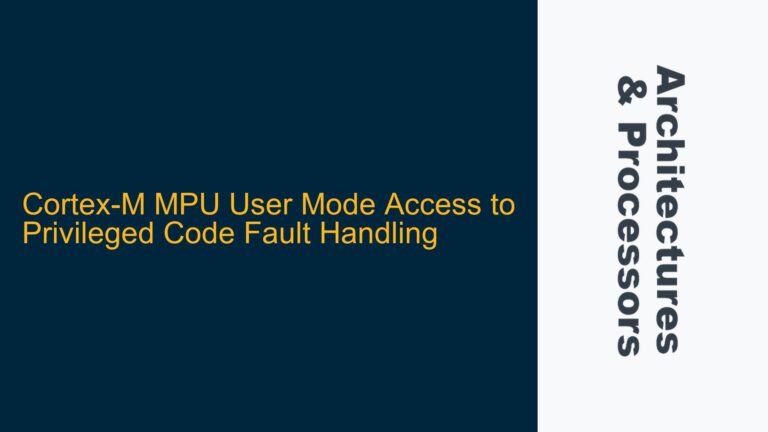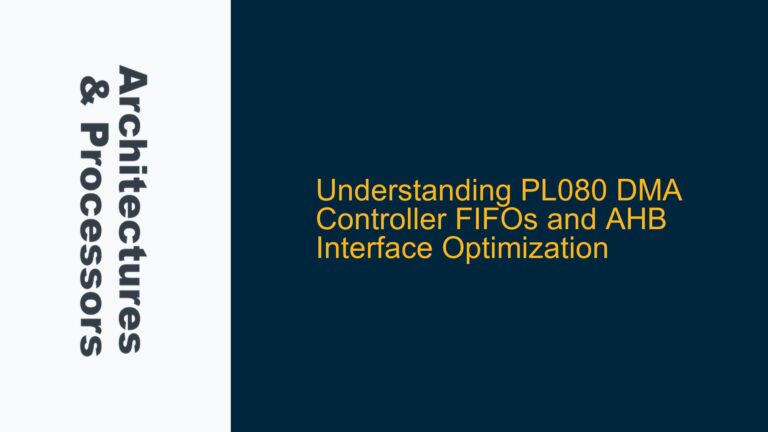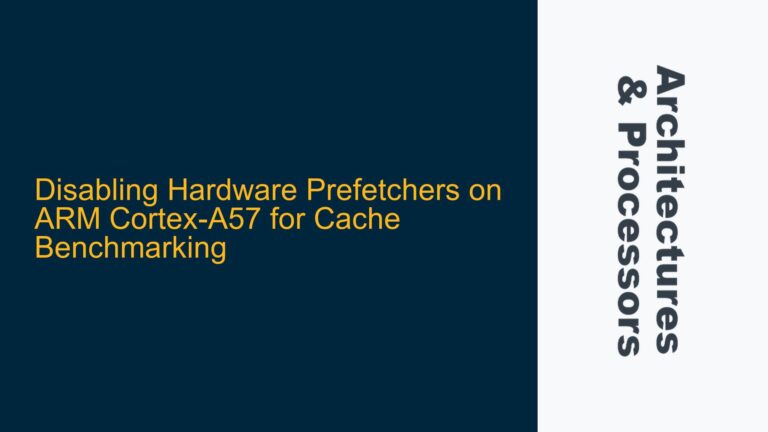ARM Cortex-M Privilege Mode Challenges in Driver Implementation
Running driver code in privileged mode on ARM Cortex-M processors is a common requirement for ensuring secure and reliable access to hardware peripherals. However, the transition between user mode and privileged mode introduces complexities, particularly when developers aim to abstract this process for ease of use. The primary challenge lies in designing a mechanism that allows developers to wrap driver code in a way that seamlessly transitions to privileged mode without introducing significant overhead or complexity. This issue is exacerbated in real-time operating systems (RTOS) environments, where drivers must operate atomically to avoid race conditions and ensure system stability.
The ARM Cortex-M architecture provides the Supervisor Call (SVC) instruction as a means to transition from user mode to privileged mode. However, using SVC for every driver function call can lead to scalability issues, especially when managing multiple drivers or collaborating with multiple developers. Additionally, the ARM Application Binary Interface (ABI) complicates matters, as the handling of function arguments and return values must be carefully managed during the mode transition. Developers often seek a cleaner, more maintainable solution that abstracts the privilege transition while maintaining performance and scalability.
SVC Instruction Limitations and Stack Management Complexity
The core of the problem stems from the limitations of the SVC instruction and the intricacies of stack management during privilege transitions. The SVC instruction is designed to trigger an exception, switching the processor to privileged mode and executing the corresponding exception handler. While this mechanism is effective for individual function calls, it becomes cumbersome when applied to multiple drivers or complex systems. Each SVC call requires careful management of the stack, function arguments, and return values, which can lead to errors and inefficiencies.
One proposed solution involves using a macro or attribute to wrap driver code, automatically handling the privilege transition. For example, a developer might want to write a UART driver function like this:
size_t write(uint8_t *ptrData, size_t len) {
PRIVILEGE {
// Code to access peripheral in privileged mode
}
}
However, implementing such a macro is non-trivial. The macro would need to handle the SVC call, manage the stack frame, and ensure that the function arguments and return values are correctly passed between modes. This requires deep knowledge of the ARM Cortex-M exception handling mechanism, stack pointer manipulation, and the ABI.
Another challenge arises from the need to manage multiple stack pointers. The ARM Cortex-M processors use two stack pointers: the Main Stack Pointer (MSP) for privileged mode and the Process Stack Pointer (PSP) for user mode. During a privilege transition, the stack frame must be copied between these pointers, which adds complexity and potential for errors. Developers must ensure that the stack frame is correctly copied and that the processor state is preserved during the transition.
Implementing a Clean Privilege Transition Mechanism with SVC and Stack Management
To address these challenges, a robust privilege transition mechanism can be implemented using a combination of SVC instructions, stack management, and careful handling of the ARM Cortex-M exception model. The goal is to create a system where developers can wrap driver code in a macro or attribute, automatically handling the privilege transition without requiring extensive knowledge of the underlying mechanisms.
The first step is to define an SVC handler that manages the privilege transition. This handler will be responsible for copying the stack frame from the PSP to the MSP, executing the driver code in privileged mode, and then restoring the stack frame to the PSP. The handler must also ensure that the function arguments and return values are correctly passed between modes. This can be achieved by carefully managing the stack frame and using the ARM Cortex-M exception return mechanism.
Here is an example of how the SVC handler might be implemented:
void SVC_Handler(void) {
// Save the current stack frame to the MSP
__asm volatile (
"MRS R0, PSP\n" // Load PSP into R0
"STMDB R0!, {R4-R11}\n" // Save remaining registers to PSP
"MSR MSP, R0\n" // Copy PSP to MSP
);
// Execute the driver code in privileged mode
uint32_t svc_number;
__asm volatile (
"TST LR, #4\n" // Check the EXC_RETURN value
"ITE EQ\n"
"MRSEQ R0, MSP\n" // Load MSP if EXC_RETURN indicates MSP usage
"MRSNE R0, PSP\n" // Load PSP otherwise
"LDR R1, [R0, #24]\n" // Load the SVC instruction address
"LDRB R1, [R1, #-2]\n" // Extract the SVC number
"MOV %0, R1\n" // Store the SVC number in svc_number
: "=r" (svc_number)
);
// Call the appropriate driver function based on the SVC number
switch (svc_number) {
case 0: _write(ptrData, len); break;
// Add more cases for other driver functions
}
// Restore the stack frame to the PSP
__asm volatile (
"MRS R0, MSP\n" // Load MSP into R0
"LDMIA R0!, {R4-R11}\n" // Restore registers from MSP
"MSR PSP, R0\n" // Copy MSP to PSP
);
}
In this implementation, the SVC handler saves the current stack frame to the MSP, executes the driver code in privileged mode, and then restores the stack frame to the PSP. The SVC number is extracted from the SVC instruction, allowing the handler to call the appropriate driver function. This approach ensures that the privilege transition is handled automatically, without requiring the developer to manually manage the stack or function arguments.
To make this mechanism more user-friendly, a macro can be defined to wrap the driver code and handle the SVC call. For example:
#define PRIVILEGE(code) \
__asm volatile ( \
"SVC #0\n" \
: \
: "r" (code) \
);
size_t write(uint8_t *ptrData, size_t len) {
PRIVILEGE({
// Code to access peripheral in privileged mode
});
}
This macro uses the SVC instruction to trigger the privilege transition, automatically handling the stack management and function call. The developer only needs to wrap the driver code in the PRIVILEGE macro, simplifying the implementation and reducing the potential for errors.
By combining the SVC handler with a user-friendly macro, developers can create a clean and maintainable privilege transition mechanism for ARM Cortex-M processors. This approach abstracts the complexity of the privilege transition, allowing developers to focus on writing driver code while ensuring secure and reliable access to hardware peripherals.

